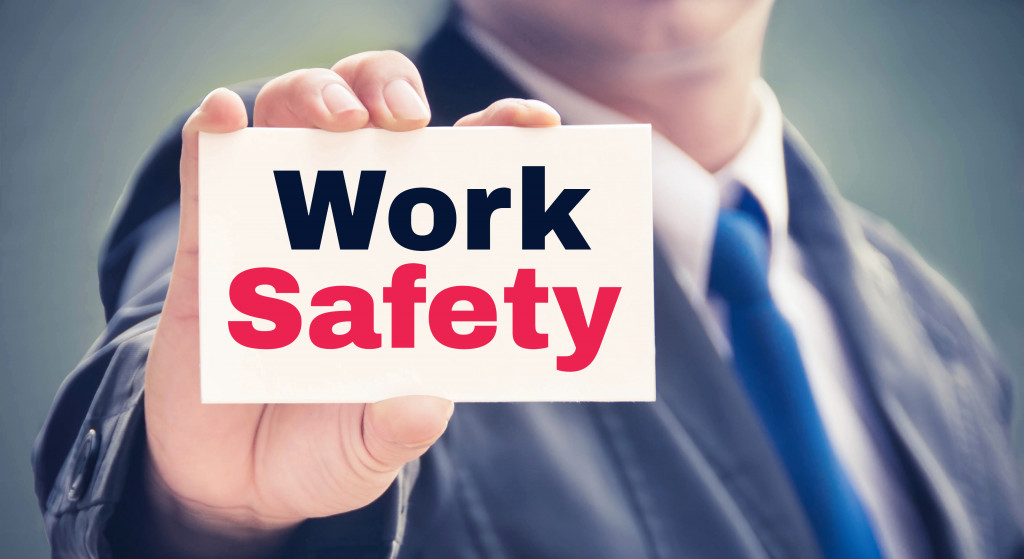- Employee safety is essential for businesses of all sectors, and employers must prioritize it.
- Regularly conduct risk assessments and preventive maintenance checks to identify potential hazards.
- Integrating safety measures can reduce the possibility of workplace accidents.
- Equip employees with the necessary knowledge and skills to perform their tasks securely.
- Develop a comprehensive safety policy that outlines safety rules and regulations.
Employee safety has become a paramount concern for businesses across various sectors in today’s rapidly evolving industrial landscape. With industries adopting advanced technologies and increasingly complex operational processes, ensuring a safe and secure working environment for employees is crucial.
As a responsible business owner or entrepreneur, prioritizing workplace safety safeguards your employees’ well-being and contributes towards higher productivity and reduced business downtime. This comprehensive guide will explore measures you can implement to ensure employee safety in industrial settings.
The Importance of Employee Safety
As an employer, you are responsible for creating a safe and hazard-free workplace. Maintaining employee safety prevents costly injury claims, litigation costs, and other legal liabilities due to accidents or unsafe working conditions. It also helps reduce absenteeism, which increases productivity and keeps your business operations running smoothly.
The Occupational Safety & Health Administration (OSHA) offers statutory guidelines on what employers should do to secure a safe workplace environment. It is essential to familiarize yourself with the applicable regulations and adhere to them when creating a safety plan for your industry.
Safety Tips for an Industrial Environment
Employers can take several practical steps to ensure their employees a safe and secure working environment. Here are some tips:
Regular Risk Assessments and Preventive Maintenance

One of the primary steps to ensure workplace safety is to conduct risk assessments in your industrial facility regularly. Identifying potential hazards and taking corrective actions can significantly reduce workplace incidents.
Additionally, adhering to a preventive maintenance schedule can help keep equipment and machinery in optimum condition, minimizing the chances of a malfunction that may lead to workplace accidents. Investing in predictive maintenance technologies, such as sensors and IoT devices, can further enhance the accuracy and efficiency of your risk assessment and preventive maintenance plan.
Integrating Safety Measures in Place
You may not always be able to control or prevent workplace incidents, but you can minimize their consequences by integrating safety measures into your industrial processes. For example, investing in epoxy tech floor coating solutions is a great way to safeguard your employees. Such epoxy coatings create a strong, non-slip surface that can reduce the risk of workplace accidents due to slipping or tripping.
In addition, this solution also provides superior resistance to abrasions and chemicals, making it an ideal choice for industrial environments.
Employee Training and Skill Development
Cultivating a safety culture starts with equipping your employees with the necessary knowledge and skills to perform their tasks securely. Regular safety training sessions should be organized for all employees, including those who join later.
Ensure that they are well-versed with the correct operating procedures, use of personal protective equipment (PPE), and emergency response protocols. Updating and reviewing your training programs periodically is essential to cover any new technology, equipment, or processes.
Implement a Clear and Effective Safety Policy
Developing a comprehensive safety policy that covers every aspect of workplace safety is essential for a smooth and accident-free operation. Clearly define the roles and responsibilities of all employees, outline safety rules and regulations, and set achievable safety goals.
Further, establish a system to track safety incidents and provide a platform for employees to report safety concerns. This open communication channel can encourage employees to be more proactive about safety and minimize unreported hazards.
The Consequences of Non-Compliance

Failing to adhere to safety guidelines and regulations can lead to serious consequences. Depending on the severity of the violation, you may be subjected to hefty fines or even criminal charges in some cases.
Furthermore, non-compliance can damage your business’s reputation and dissuade potential customers from investing in your products or services. It can also lead to decreased job satisfaction among your employees, resulting in higher absenteeism and lower productivity.
The Bottom Line
Ensuring employee safety in industrial settings is a constant and collective effort of business owners and employees. By implementing robust safety policies, investing in regular training and maintenance, and fostering a strong safety culture, you can create a secure working environment that aligns with your industry’s regulatory compliance requirements.
Remember, prevention is always better than cure when it comes to workplace safety. So, take a proactive approach to safeguard your employees’ well-being, and in turn, you will reap the benefits of a thriving and successful business.





